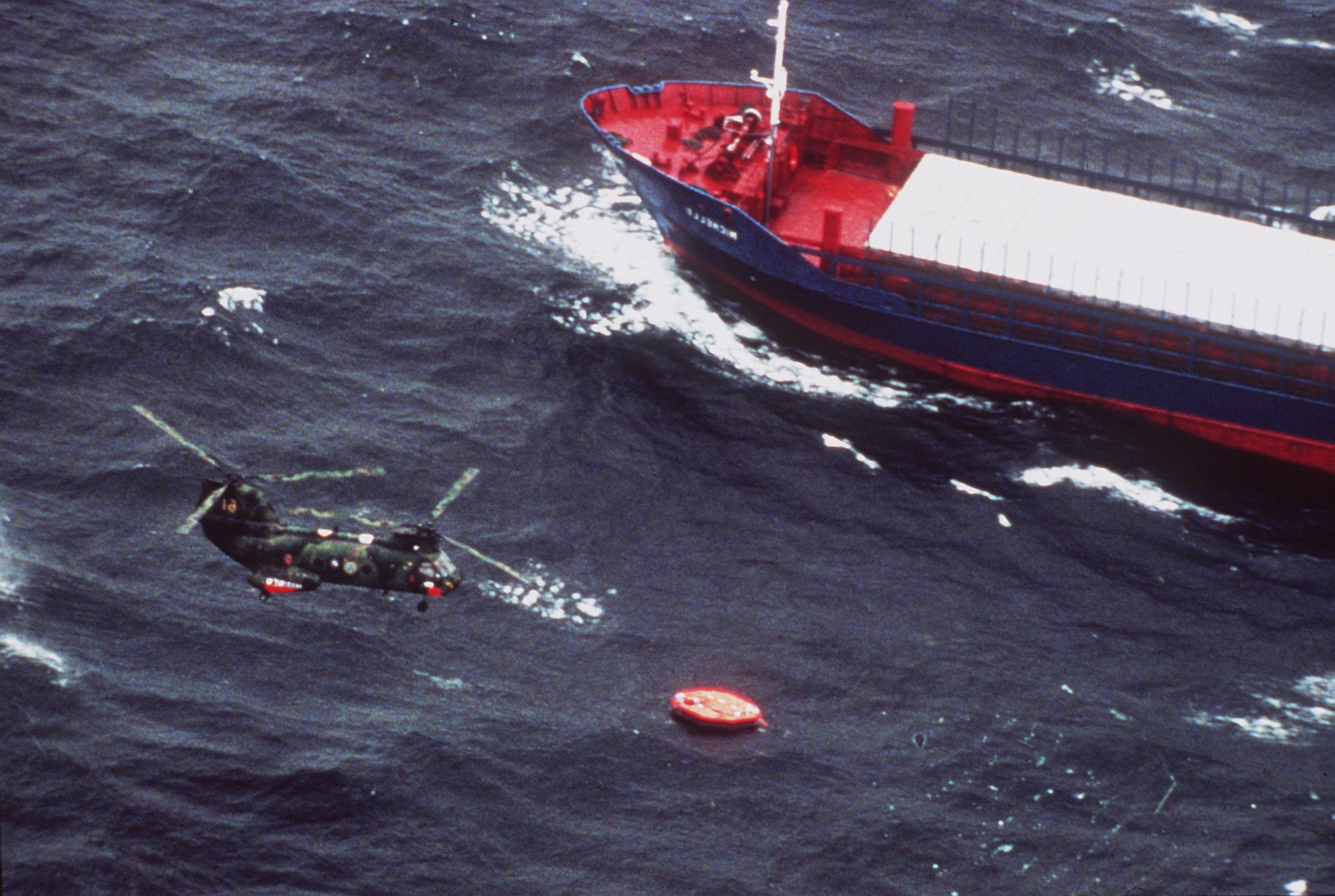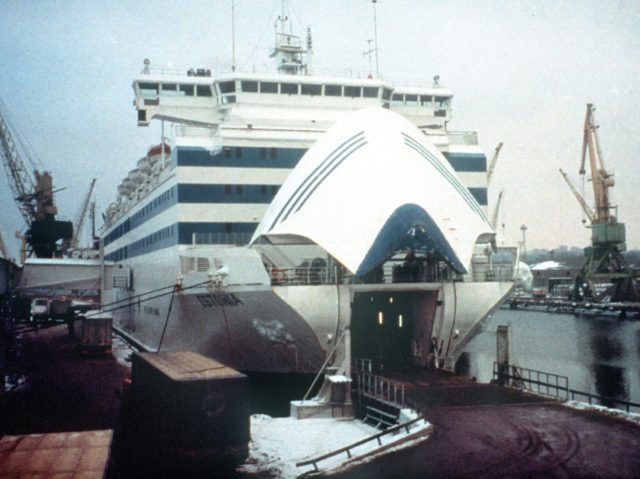STOCKHOLM (AP) – Two Swedish nationals were acquitted Monday of desecrating a sunken ferry by sending down a robot in the Baltic Sea to film the wreck of one of Europe´s deadliest maritime disasters.
In its ruling, the Goteborg District Court said that the men had “committed acts that are punishable under the so-called Estonia Act” by sending down a cable-bound diving robot to the M/S Estonia, which sank Sept. 28, 1994, killing 852 people.
“However, the district court considers that the men, who are both Swedish citizens, cannot be punished because they have committed the act from a German-flagged ship in international waters.”
The September 2019 dive was banned by the law protecting the car ferry that lies in international waters with most of the victims still entombed inside. The legislation has been signed by Sweden, Estonia and Finland but not by Germany.

File–Disasters–Swedish Marine rescue helicopter flies over the life rafts from the Estonian ferry ‘Estonia’, that capsized and sank in the Baltic Sea. More than 850 people were onboard. On the left is the cargo ship Michelle, which took part in the rescue operations. (AP Photo/Esa Pyysalo) 28 September 1994
The ferry is on the seabed some 80 meters (264 feet) below the surface. The wreck is considered a graveyard, which gives the area protection under the law.
The Swedes – Henrik Evertsson and Linus Andersson – were part of a film team that worked on a documentary about the sinking of the Estonia. The team included Swedish, Norwegian and German citizens, while the boat´s crew included German and Polish citizens.
The court said “Germany is not bound by the agreement reached between Estonia, Finland and Sweden on which the law is based. The act is therefore not punishable on the German-flagged ship, which is to be seen as German territory.”
During the dive, a large hole in the hull of the ferry was spotted, raising questions about the cause of the sinking and prompting Swedish, Finnish and Estonian authorities to say that a new dive is needed.
A 1997 report had concluded that the ferry that was sailing from Tallinn to Stockholm sank after the bow door locks failed in a storm, and flatly rejected the theory of a hole, which has long been the focus of speculation about a possible explosion on board.
No timeline for a new dive has been announced.

The bow door of the sunken ferry M/S Estonia is lifted from the bottom of the sea off Uto island overnight 19 November 1994, nearly two months after the ferry sank in the Baltic sea, killing 852 people on the night of September 27-28. Ceremonies starting the week of 27 September 2004 will commemorate Europe’s worst post-war maritime disaster amidst calls for a new probe into the accident. JAAKKO AVIKAINEN/AFP via Getty Images

COMMENTS
Please let us know if you're having issues with commenting.